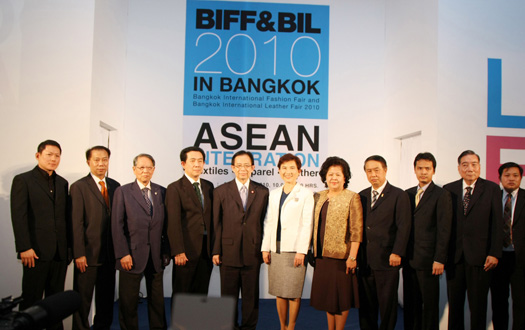
Milan, 1969: in the Jolly Hotel of Milano Due, six clothing brands and a group of agents, members of Assomoda, created MilanoVendeModa: a legendary show which now makes a comeback under a new name, MI Milano prêt-à-porter.
To continue the story of a show that guided and sustained the Italian-made prêt-à-porter boom and was thus instrumental in making Milan a capital of fashion.
HEADING TOWARDS ’68.
In 1951 Marchese Giovan Battista Giorgini presented the first emerging names in Italian Style at the collective fashions shows in the Sala Bianca of Palazzo Pitti. Florence continued to be the capital of the embryonic Italian fashion industry throughout the ‘60s.
Names like Krizia, Missoni, Valentino, Pucci and Roberta di Camerino made their first appearance on the catwalk. But the revolutionary mood of 1968 brought a radical turnaround, challenging the foundations and dynamics of the textile/clothing industry.
The one-off haute couture creations hand-sewn in the couturier’s workshop became obsolete in a revolutionary world that dressed in jeans and pursued the hippy lifestyle. On the other hand, the masses which until then had worn mass-produced, second-rate clothes now demanded better quality. The solution was ready-to-wear fashion: a middle way that industrialized the idea prior to the designer and made style democratic.
REREADING THE ’70s.
For Italy, the ‘70s were the “years of lead” which started with the murder of Luigi Calabresi and ended with the kidnapping of Aldo Moro. The Bel Paese was tackling the devaluation of the lira, the oil crisis and Sundays without cars as a result of the oil embargo.
During this crisis – a word which, coincidentally, means “change” in Greek – the stylists came to the fore. In ’72 Laura Biagiotti and Roberto Cavalli made their debut, while in ‘75 Armani and Sergio Galeotti established Giorgio Armani S.p.A. And while Fendi in ’77 presented its ready-to-wear together with its accessories, in ’78 Versace and Ferré burst onto the scene.
By the end of the ‘70s the winning team of Italian fashion designers was ready. This calls for a reconsideration of Mario Capanna’s “amazing years” and ready-to-wear’s date of birth, which is usually placed in the ‘80s.
In actual fact, many other inventions can be dated to the most controversial of decades. For example, in ’71 the engineer Ray Tom sent the first e-mail and opened the telecommunications era, though the things that most revolutionised telecommunications in the ‘70s were the debut in Italy of colour TV and the birth of local TV stations which increased television’s standardisation.
The fact is that fashion, “society’s writing”, reflected this shift towards the general public in its collections. And the fashion designer was about to assume pop star status, as Andy Warhol predicted in ’71 when he portrayed Valentino in the same way as one of his serial icons. Italian fashion only needed a larger stage appropriate to its new, expanded dimensions. The Milan fair complex was the perfect answer to this need.
LET THE FAIRS BEGIN: MILAN CITY OF FASHION BECOMES MILANOVENDEMODA.
Already as early as ’72, Walter Albini, the “father” of fashion designers, left Florence to show his collection in Milan, followed by Missoni and Krizia. However, in ’79, Beppe Modenese, a prominent figure in the fashion world, gathered together about forty fashion labels at the Modit fair.
In the same year the exhibition was perfected with the Milano Collezioni fashion show centre. Here the great names in fashion took to the catwalk one after the other. In ’82 MilanoVendeModa was taken over by EXPOcts, the agency that organises fairs on behalf of Unione del Commercio of Milan.
Thanks to an agreement with Efima and Modit, the following year the fair took to the fiera di milano stage. It was an unprecedented success. So much so that MilanoVendeModa became a synonym for all the other Milan-style fairs.
The shiny mirrors and sparkling crystal of the Sala Bianca in Florence were replaced by the less frivolous setting of the Milan fair centre. The same halls that hosted the latest industrial advances became the equally appropriate, physical and moral headquarters of a new form of industrial style.
THE ‘80s: FROM FIERA DI MILANO TO THE WORLD.
The fashion designer phenomenon burst onto the scene, fuelled by yuppie hedonism and by a general return to a way of life that rocked on into the early hours, driven along by Saturday Night Fever. Alberta Ferretti (‘80), Luciano Soprani (‘82) and Enrico Coveri (‘82) made their debut.
Collections split into young-fashion ranges and jeans. The first jeans range, designed by Armani, hit the shops in ’81 priced at 18,000 lire. Suddenly everyone was wearing leg warmers and the marriage of Diana Spencer to Prince Charles rekindled the appeal of lavish weddings.
Armani was featured on the front cover of Time magazine, setting the seal of approval on Italian style and Milan, the international fashion capital. The city became a showcase for happenings, like the success of Trussardi: a label that hit the headlines with major events in public spaces from Piazza Duomo to La Scala opera house.
This was the start of the fashion show spectacular designed for an ever-wider audience. Everything is fashion. Even youth subcultures absorbed aesthetics with the look of the paninari: Timberland boots, Armani jeans, Moncler padded jackets, Naj Oleari accessories.
The new “throwaway” Swatch watch was regularly updated, like clothing, through seasonal collections. Fashion addiction was such that it was stigmatised through the invention of a new term – fashion victim. Indeed, amidst controversy and coups de théâtre, Franco Moschino made a name for himself by being ingeniously ironic about fashion victimism.
The famous names were joined by new labels that brought the idea of dressing for success into dispute. While in ’85 Dolce & Gabbana were the standard-bearers of a Sicilian style which anticipated glocalism, Romeo Gigli laid the foundation of a new aesthetic rigour dubbed “minimalism”: a sea-change that translated the imminent New Age spirituality of the ‘90s into a style.
The fact that Milan had surpassed Paris, the traditional capital of fashion, was so obvious that in ’89 Gianfranco Ferré was invited to become Stylistic Director of Dior, the highest symbol of French haute couture. In the same year, the fall of the Berlin Wall anticipated the fall of barriers in a world on its way to become a global village. Helped along by telematics which, again in ’89, introduced virtual reality.
THE ‘90s: NEW AGE.
In ’91 the first GSM mobile phones started ringing, then in ’92 engineer Neil Papworth sent the first SMS (text message). Everything was closer and faster: there were no borders, as in the new world Europe prepared to enter as twelve member countries adopted the Euro. In Milan, MilanoVendeModa joined forces with Modit to form MoMi-Modamilano.
By this time, Italian fashion was moving on the international stage, though it continued to leverage the fair that started it all. While the “Clean Hands” inquiry opened the way to the Second Republic, the fashion houses, too, were preparing for the generational transfer, starting with the arrival of Tom Ford at Gucci. In the meantime, in the wake of anti-yuppie grunge that came to the fore in Seattle, fashion trends started originating on the street, leading to street wear.
Everything was turned upside-down, like the visible underwear that was launched by Dolce & Gabbana and transformed into an iconic style by Madonna. The same occurred with the push-up bra boom. Prada explored the anti-aesthetic aesthetic. And the Wannabe Spice Girls (’96) created a trend for misshapen wedge heels. Show business personalities became increasingly instrumental to the launch of new trends, confirming fashion’s gradual shift towards pop culture. And when Mariah Carey cut the waistline off her jeans in ’98, the whole world followed suit.
THE NEW MILLENNIUM: MILANOVENDEMODA BECOMES MI MILANO PRÊT-À-PORTER.
Italian fashion was on the threshold of the new millennium. As the old century turned into the new, and prompted by the Millenium Bug scare, many fashion houses joined together to create international luxury goods conglomerates, combining high fashion with high finance and transforming labels into multinationals.
In 2003, as the union of MoMi-Modamilano came to an end, Modit and MilanoVendeModa returned to their former selves as separate fairs. The rest of the story forms the recent history of the third millennium when, at the end of the Noughties, MilanoVendeModa is reinvented as MI Milano prêt-à-porter.



